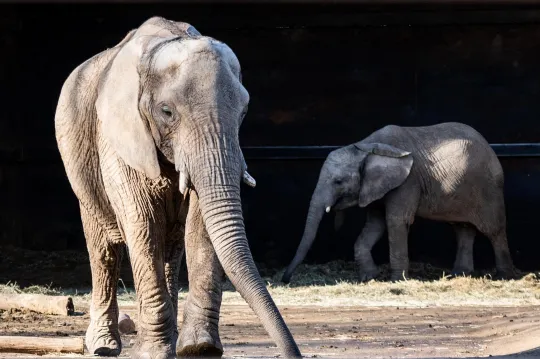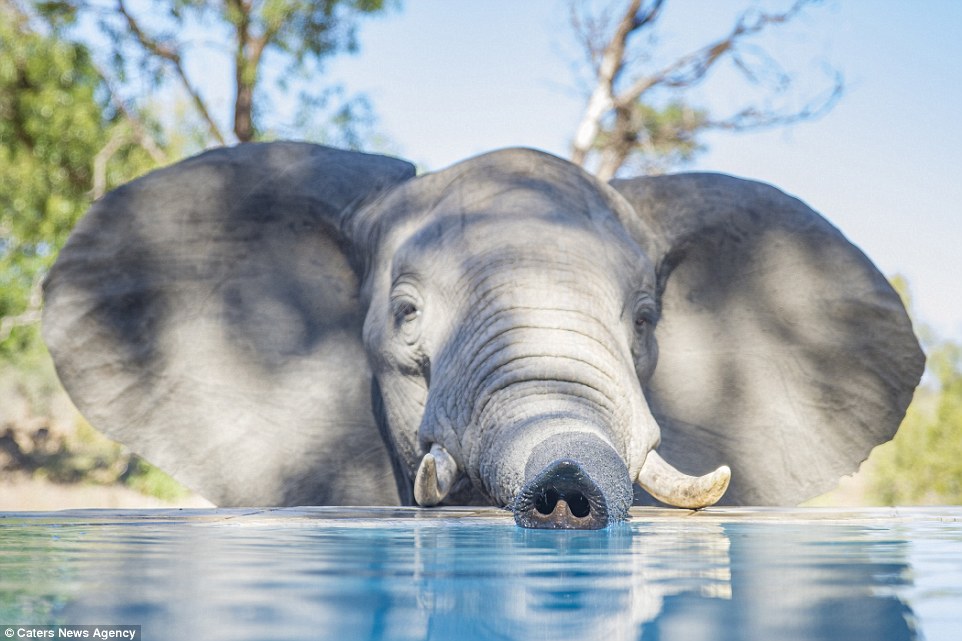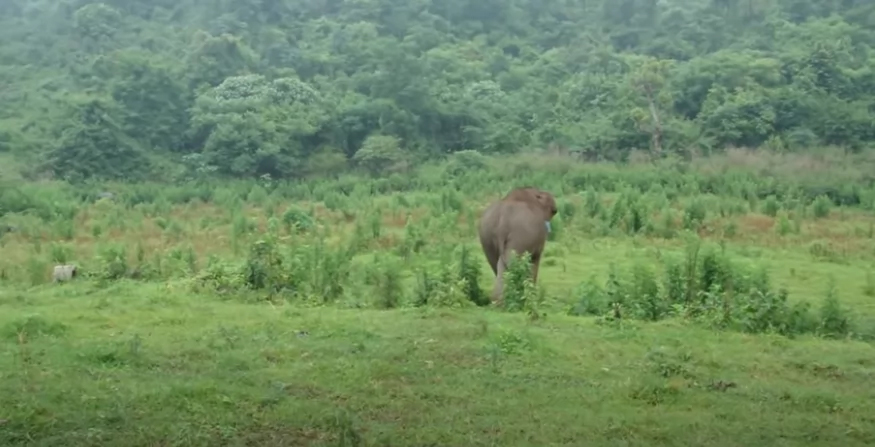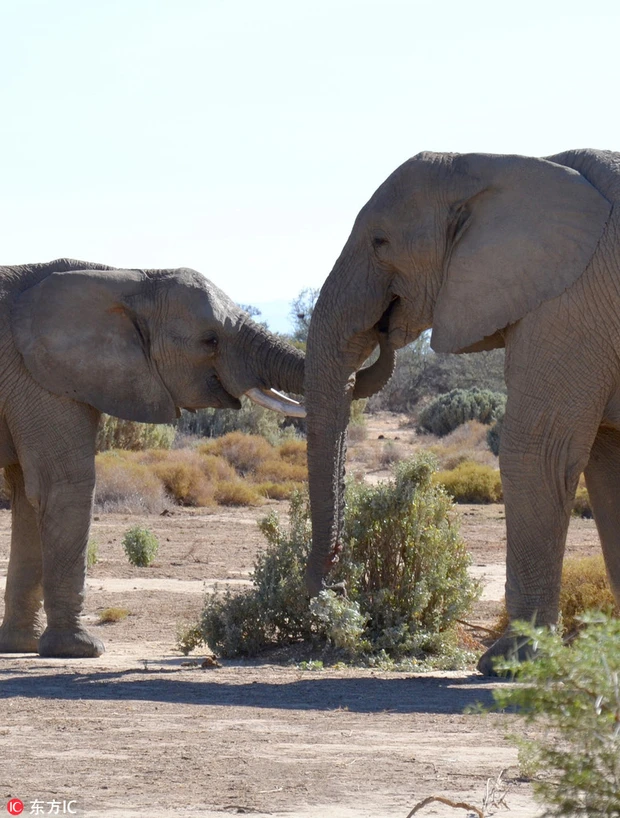Falcons may look like little hawks, but they are in a category of their own. There are about 40 species worldwide that belong to the genus Falco. Known for their keen eyesight, hunting prowess, and fast speeds, they make up a small portion of the “birds of prey” category. In this article, we are going to look at the 7 types of falcons you can find in the United States.
TYPES OF FALCONS IN THE UNITED STATES
There are 7 species of falcon that currently make the U.S. their home, at least for part of the year. This is excluding the rare vagrants that may occasionally be spotted. Let’s learn a little about each one.
If you want to see which falcons can be found where you live, click here to find information about the falcons found in each U.S. state.
1. AMERICAN KESTREL

- Scientific name: Falco sparverius
- Length: 8.7-12.2 in
- Weight: 2.8-5.8 oz
- Wingspan: 20.1-24.0 in
The American Kestrel is North America’s smallest falcon, larger than a robin, but slightly smaller than a crow. But don’t let their small stature fool you. Kestrels are fierce predators that can take down other birds as big or bigger than they are, such as Northern Flickers.
They primarily feed on insects and invertebrates like grasshoppers, beetles, cicadas, dragonflies, moths and spiders. They also eat mice and other small rodents, bats, lizards, frogs and songbirds.
These tiny falcons have small heads and unique coloring of rusty browns and bluish grays. Both sexes have black barring on their back, and two black stripes on the face. Females are mostly rusty colored, while males have bluish-gray on their head and wings.
Look for them in the summer when they are most active. They often perch on fence posts and telephone wires, especially around farmland. Kestrels can position their body into the wind and hover in place, scanning the ground below.
The American Kestrel can be found throughout most of the U.S. year-round. In southern Texas and Florida, they may tend to only be winter visitors. Kestrels breed in the north, throughout much of Canada, Alaska, and the states along the northern U.S. border.
2. MERLIN

- Scientific name: Falco columbarius
- Length: 9.4-11.8 in
- Weight: 5.6-8.5 oz
- Wingspan: 20.9-26.8 in
Merlins spend the summer breeding months in Canada, Alaska and along the northern U.S. border. Then they migrate through most of the central and eastern parts of the U.S., and is the best time for people in most states to spot them. They settle for the winter in the western U.S., along the U.S. Gulf coast, Mexico, Central America and parts of northern South America.
Their primary food source is other birds, such as house sparrows, dickcissels, sandpipers and other shorebirds. Merlins are experts at the high speed attack, zooming across the ground horizontally or even chasing their prey from below, forcing them higher and higher until they get tired. They have sometimes been observed hunting large flocks of birds in pairs.
Merlins are slightly larger than kestrels, with a stocky body and squarish head. They have a heavily streaked chest and belly, but their coloring can differ slightly from gray to brown due to geographic location. In flight, they are heavily barred on the underside of their wings.
Merlins are very widespread raptors and can be found in some capacity in all of North America. In the early 20th century their population was on the decline, but they have since recovered and are listed as low concern.
Merlins are usually on the move stalking sparrows and other small birds so they aren’t easy to spot. When they aren’t in flight they’re perched high in the treetops and thinking about their next meal. So keep an eye out near forest edges and on low perches in open grasslands.
3. APLOMADO FALCON

- Scientific name: Falco femoralis
- Length: 15.0-16.9 in
- Weight: 7.3-17.6 oz
- Wingspan: 35.0 in
In the United States, the Aplomado Falcon is only found in Texas and New Mexico. In these states they are still uncommon and have a sparse year-round population in just a few areas near the Mexico border. Their range extends down from Mexico all the way to Argentina.
In many cases, they resemble the American Kestrel. They have rusty red on their belly that sometimes extends up to the chest, or sometimes the chest is white. Their under-feathers are dark with white barring, and this pattern extends to their sides. A black and white face makes the yellow base of their bill and yellow eye-ring stand out.
Their preferred habitat is grasslands along the coast and desert regions with yucca and mesquite. They will hunt insects in the air, and also prey on lizards, small mammals and birds. Interestingly, they have been seen chasing prey on foot.
Aplomados are not only rare in the United States, but also on the endangered species list in both the U.S. and Mexico. However, there are currently efforts to reintroduce them to Southern Texas and the United States that you can learn more about here.
4. GYRFALCON

- Scientific name: Falco rusticolus
- Length: 18.9 – 25.5 in
- Weight: 28.2 – 74.1 oz
- Wingspan: 48.4 in
These cold-weather falcons breed around the Arctic circle, then move further south into Canada for the winter. The states along the U.S.’s northern border are at the bottom of their winter range. They would be considered a lucky, rare sighting in most places in the U.S.
They can come in two distinct color morphs, white and gray. The white morph, pictured above, can look a bit like a snowy owl with white plumage flecked with black. Gray morphs have dark backs and heads, either solid or with white banding.
In their breeding range they rely mainly on ptarmigan and seabirds for food. During the winter if they venture into the U.S. they look for areas of abundant food, such as coasts, grasslands and river valleys.
It is believed that Gyrfalcons mate for life. They nest on cliffs or reuse the nests of ravens and eagles.
5. PEREGRINE FALCON

- Scientific name: Falco peregrinus
- Length: 14.2-19.3 in
- Weight: 18.7-56.4 oz
- Wingspan: 39.4-43.3 in
Peregrine Falcons have one of the longest migrations of any bird in North America. While some remain year-round in one area, many migrate from their breeding grounds in the Arctic to winter in Mexico even further south. Some remain along the west coast and parts of the east coast, but for most of the country fall migration is the best time to spot them. Their name, “peregrine” means wanderer / pilgrim. This hints at their widespread nature, being found on early every continent world wide.
Due to pesticide poisoning, populations in eastern North America were almost totally wiped out by the middle of the 20th century. Thankfully, they have made a strong comeback.
Males and females look the same. These crow-sized falcons have a dark back and head, with a light chest and streaked underparts. They have a bright yellow coloring on their legs, around their eye and at the base of their beak.
Peregrines are not only the fastest bird, but also the fastest animals on the planet reaching speeds of well over 200 mph when diving for prey. Their prey is mainly birds, almost any species is on the menu. In urban settings, pigeons can be a large part of their diet. They also eat bats and rodents.
These falcons nest on cliff faces, even incredibly steep ones like those found in the Grand Canyon. They will also sometimes use abandoned eagle, owl or red-tailed hawk nests if there aren’t any cliffs available.
6. PRAIRIE FALCON

- Scientific name: Falco mexicanus
- Length: 14.6-18.5 in
- Weight: 14.8-38.8 oz
- Wingspan: 35.4-44.5 in
Prairie Falcons prefer wide open spaces like grasslands and fields where they soar high overhead looking for their next meal which is usually small mammals or other birds. They are found throughout much of the the western half of the U.S. year-round, and some may move slightly east to the middle of the country for the winter months.
While they do some soaring, they often fly low over open land. Because water can be hard to find in their preferred habitat of grassland or tundra, they often take dust baths.
In the summer, small mammals are on the menu, especially squirrels. In the winter, their diet shifts to medium sized birds including horned larks and western meadowlarks.
Their brown colors do make them somewhat camouflaged and difficult to spot sometimes. They are brown above with light colored underparts barred with brown. In flight, you can see a dark spot in the “armpit” of their wing. They have a brown “mustache”, and a white eyebrow stripe.
The prairie falcon doesn’t build much of a nest. They often look for natural crevices and depressions, or areas along a cliff with a protective overhang. A breeding pair will patrol their territory, and fight any intruding Peregrin Falcons.
7. CRESTED CARACARA

- Scientific name: Caracara plancus
- Length: 19.3-22.8 in
- Weight: 37.0-45.9 oz
- Wingspan: 48.0-49.2 in
The Crested Caracara looks unlike any of the other species of falcon. In fact, the Cornell Lab describes them as a bird that “looks like a hawk…behaves like a vulture, and is technically a large tropical black-and-white falcon.” They are most common in Central America but are found in a few spotty areas of New Mexico, Texas, Florida, and along the Gulf of Mexico.
Large compared to other U.S. falcons, the caracara has long yellow legs and a dark brown body. Their white neck and checks are topped with a dark cap, and a bright orange beak with bluish-gray tip.
Crested Caracaras are omnivores that do eat live prey, but are though to feed mainly on carrion (dead animals). They will often be seen among turkey vultures feasting on a carcass.
Unlike other falcons, these birds regularly walk, or even run, on the ground. When breeding, they like to choose the tallest tree in their area. A pair will stay together for several years, and often return to the same nest site.
Caracaras are not shy birds, so if you happen to be in their area, look for them perched in open landscapes on the tallest trees or structures.








